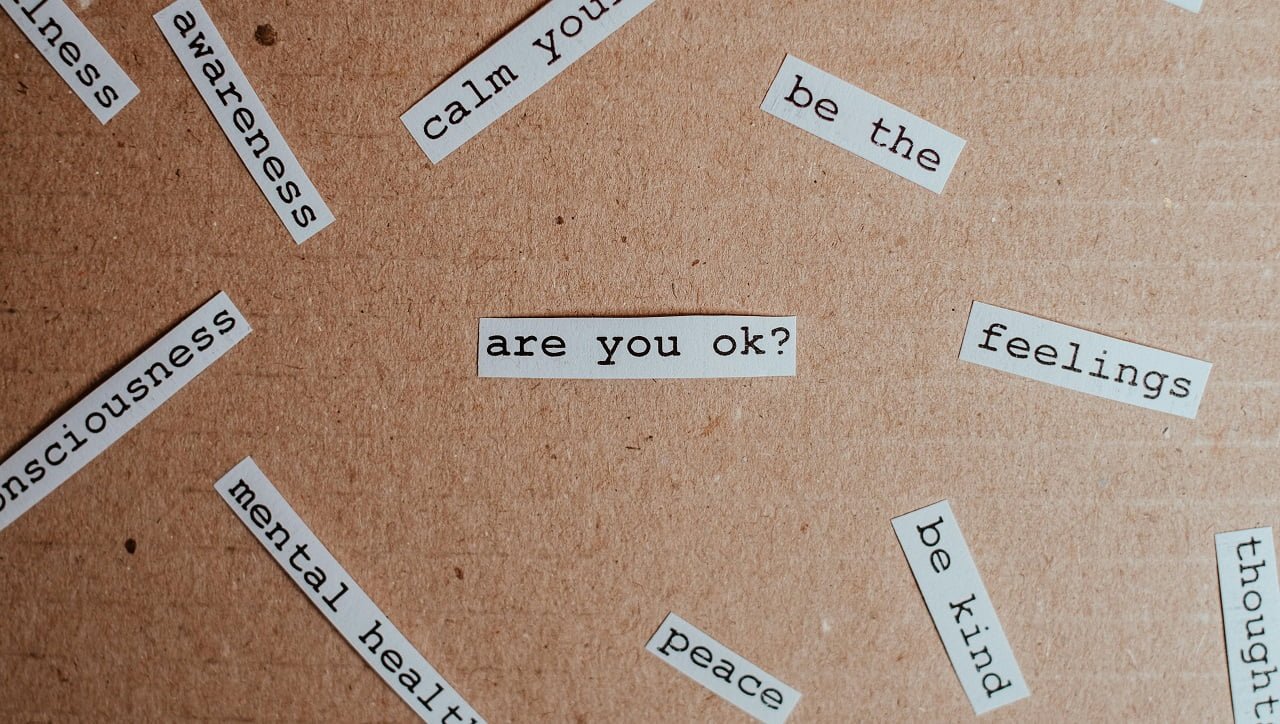Have you ever considered that the reason why you find yourself stuck in the same dysfunctional relationship patterns might be due to a subconscious familiarity with the chaos?
It’s a puzzling concept, isn’t it? But perhaps there’s a deeper reason behind this phenomenon that we often overlook.
Let’s explore the intricate web of emotions and behaviors that keep us entangled in these repetitive cycles without even realizing it.
Why Do We Repeat Destructive Patterns?
You find yourself stuck in repeating destructive patterns because they feel familiar and safe, even if they’re harmful.
You may have learned these behaviors from childhood or past experiences, shaping your understanding of relationships.
Sometimes, unconsciously, you may be trying to gain control over past traumas by repeating them, believing you deserve to suffer as a form of self-punishment.
We Repeat What’s Familiar
Falling back into familiar patterns, even when they’re destructive, is a common human tendency rooted in our subconscious need for comfort and security. Breaking free from these cycles requires a conscious effort to challenge the norms you’ve grown accustomed to.
To create change, you must embrace growth and seek healing from past wounds. Remember, it’s okay to step out of your comfort zone; that’s where the magic of transformation happens.
By recognizing the familiarity of these patterns, you can start the journey towards healthier relationships. Be patient with yourself as you navigate this process; change doesn’t happen overnight.
Allow yourself the space to evolve and break free from the chains of destructive repetition.
We Repeat What We Learned As Children
Inherited behaviors and beliefs from our childhood greatly influence why we often find ourselves repeating destructive patterns in relationships. Childhood conditioning, learned behaviors, and family influences play a significant role in shaping our relationship dynamics.
During our formative years, we absorb information like sponges, and this emotional imprinting becomes the foundation for how we interact with others later in life. Unconscious programming stemming from early experiences can lead us to unknowingly seek out familiar but harmful relationship patterns.
We Repeat What Was Traumatizing In An Unconscious Effort To Gain Mastery Over It
Unconsciously drawn to what once caused us pain, we often find ourselves repeating destructive relationship patterns in a subconscious attempt to gain mastery over past traumas. This complex phenomenon operates beneath our awareness, compelling us to recreate scenarios that mirror our past hurts. Here’s why this happens:
- Unconscious patterns: Our minds gravitate towards familiar patterns, even if they’re harmful.
- Trauma mastery: We seek to rewrite the script of our past by reenacting it in the hopes of achieving a different outcome.
- Repetitive cycles: Without intervention, we get caught in loops of destructive behavior.
- Healing wounds: Recognizing these patterns is the first step towards healing and breaking free from destructive cycles.
We Think We Deserve To Suffer
Feeling unworthy of happiness, you often find yourself trapped in destructive patterns, convinced that suffering is what you deserve. This belief stems from deep-rooted issues with self-worth that require reflection and understanding.
Breaking free from these cycles is a challenging but necessary part of your healing journey. It involves practicing self-compassion and unlearning the beliefs that keep you stuck in a cycle of suffering.
By acknowledging your worth and challenging these destructive thoughts, you can begin to shift towards healthier relationship patterns. Remember, you’re deserving of love, respect, and happiness.
Embrace the journey of healing and growth, knowing that you’re capable of breaking free from these harmful cycles.

We Repeat What We Don’t Repair
Repeating dysfunctional relationship patterns often stems from unresolved issues that we choose to ignore rather than confront. Addressing these underlying problems is important in breaking the cycle of repeated patterns. Here’s why we tend to repeat what we don’t repair:
- Emotional Triggers: Unresolved emotions can act as triggers, leading you back to familiar but unhealthy relationship dynamics.
- Self-Sabotage: Subconsciously, you may engage in behaviors that sabotage potentially healthy relationships due to unresolved issues.
- Unresolved Trauma: Past traumas, if left unaddressed, can manifest in destructive relationship patterns.
- Fear of Change: Fear of the unknown or fear of stepping out of your comfort zone can keep you stuck in repeating the same dysfunctional patterns.
What Fires Together, Wires Together
When certain behaviors or emotions consistently occur together in a relationship, they become deeply interconnected, shaping the pattern that governs interactions between individuals. Neural connections in the brain strengthen as behavior patterns repeat, leading to the formation of relationship habits. This phenomenon is rooted in brain plasticity, the brain’s ability to reorganize itself by forming new neural connections throughout life.
Emotional triggers within relationships often fuel these repetitive cycles, causing individuals to react in familiar ways. Breaking free from these patterns requires cognitive restructuring, consciously changing thought processes and responses to situations. It involves recognizing the triggers that lead to repeated behaviors and actively working to break the automatic reactions.
Through mindful awareness, individuals can begin to rewire their responses, creating new neural pathways that support healthier interactions. By understanding how what fires together wires together, you can take steps to break free from dysfunctional relationship patterns and foster more positive connections with others.
Breaking Old Patterns
You’ve recognized the repeating cycles in your relationships, and now it’s time to break free from those old patterns.
Start by understanding the relationship dynamics in your family history, then take a closer look at how you contribute to these patterns.
Become More Aware Of The Relationship Patterns In Your Family Of Origin
To gain insight into your current relationship patterns, it’s important to explore the dynamics of your family of origin, where many of these patterns may have originated. Understanding how your family interacted and communicated can provide valuable clues to your own behaviors.
- Family Dynamics: Examine how roles and relationships were structured in your family.
- Self Awareness: Reflect on how your upbringing has influenced your beliefs and behaviors.
- Breaking Cycles: Identify recurring patterns and make a conscious effort to change them.
- Emotional Triggers: Recognize what situations or behaviors trigger strong emotional responses.
Reflect On Your Own Behavior
Reflecting on your own behavior is a key step in breaking old patterns that may have developed from your family of origin. Self-reflection isn’t always easy, but it’s essential for personal growth. By carefully exploring your behavioral patterns, you can begin to understand the motivations behind your actions.
Uncovering these motivations allows you to make conscious choices to change those patterns. Breaking the cycles of dysfunctional behaviors requires courage and commitment to healing. As you investigate into your own actions and reactions, you pave the way for healthier relationships.
Embracing this journey of self-discovery and transformation is a powerful means of breaking free from old, harmful relationship patterns and fostering healing in your relationships.
Heal The Underlying Trauma Wounds
Healing the underlying trauma wounds is an important step in breaking old dysfunctional relationship patterns. It’s vital to start on this inner healing journey to pave the way for a healthier emotional future.
Here are some key aspects to ponder in this transformation journey:
- Inner Healing: Addressing the deep-rooted wounds that shape your relationship patterns.
- Transformation Journey: Embracing change and growth to break free from repetitive cycles.
- Self Discovery Process: Uncovering your true self and understanding how past traumas impact your present interactions.
- Emotional Healing: Nurturing your emotional well-being and learning to heal from past hurts.
Taking these steps in your healing journey can lead to profound shifts in how you approach relationships.
Learn And Practice New Skills
Engage in learning and practicing new skills to effectively break free from old dysfunctional relationship patterns. By honing mindful communication and emotional intelligence, you can navigate interactions with more awareness and empathy.
Understanding healthy boundaries is essential; it allows you to prioritize your well-being while fostering respectful connections. Regular self-awareness practices help you recognize triggers and patterns, empowering you to respond rather than react in relationships.
Explore into the depths of relationship dynamics to comprehend the intricacies at play and make informed choices. Embracing these skills equips you with the tools needed to forge healthier, more fulfilling relationships.
Be Kind to Yourself
In your journey to break old patterns, remember to treat yourself with kindness and compassion as you navigate through the process of self-discovery and growth. Being gentle with yourself is essential in fostering positive change.
Here are some ways to support yourself along the way:
- Self care practices: Prioritize activities that nourish your mind, body, and soul.
- Self compassion exercises: Practice speaking to yourself with the same kindness you’d offer a friend.
- Personal boundaries: Set clear limits to protect your emotional well-being and honor your needs.
- Inner healing journey: Embrace the process of healing past wounds to move forward with strength and resilience.

Frequently Asked Questions
How Can Childhood Experiences Affect Our Relationship Patterns in Adulthood?
Childhood experiences can deeply influence your relationship patterns in adulthood. Attachment theory, childhood trauma, family dynamics, emotional regulation, and core beliefs shape how you connect with others. Understanding these roots can aid in personal growth and healing.
Can Therapy Help Break the Cycle of Repeating Dysfunctional Relationship Patterns?
Therapy techniques can definitely help break the cycle of repeating dysfunctional relationship patterns. Through mindful awareness, exploring relationship dynamics, emotional healing, and cognitive reframing, you can gain insights and tools to create healthier connections.
Is It Possible to Change Our Subconscious Beliefs That Drive Us to Repeat Destructive Patterns?
You can change those hidden beliefs that steer you towards repeating harmful cycles. By altering your mindset, addressing past trauma, and consciously reshaping your behavior, you can break free from destructive relationship patterns and find healing.
What Role Does Self-Awareness Play in Breaking Old Patterns and Creating Healthier Relationships?
To break old patterns and create healthier relationships, self-awareness is key. Mindfulness practice, emotional intelligence, self-reflection exercises, communication skills, and setting relationship boundaries are crucial. By understanding yourself better, you can cultivate fulfilling connections.
Are There Specific Techniques or Strategies That Can Help Individuals Break the Cycle of Dysfunctional Relationship Patterns?
To break dysfunctional relationship patterns, try incorporating mindfulness practice for self-awareness, cognitive restructuring for changing thought patterns, setting boundaries for healthy interactions, practicing self-care habits, and relationship journaling for reflection and growth.
Conclusion
To sum up, it’s like the saying goes, ‘old habits die hard.’ We find ourselves stuck in the same dysfunctional relationship patterns because we haven’t addressed the root causes or learned healthier ways of relating.
By breaking old patterns and making conscious efforts to change our behaviors, we can break free from the cycle and create healthier relationships.
Remember, change is possible, but it starts with recognizing and addressing the patterns that no longer serve us.





